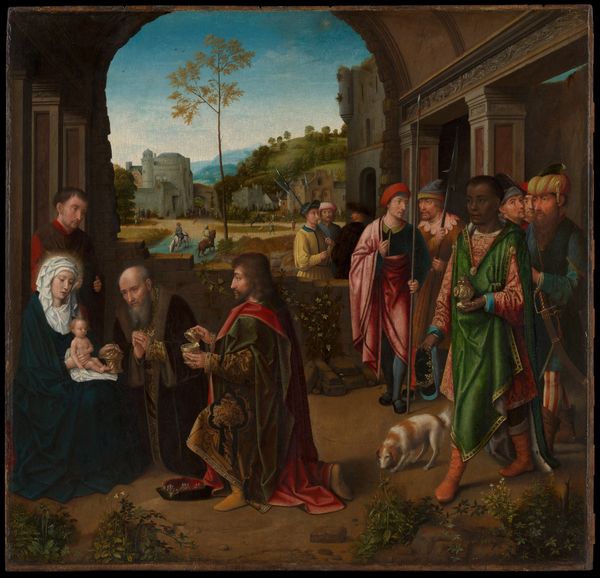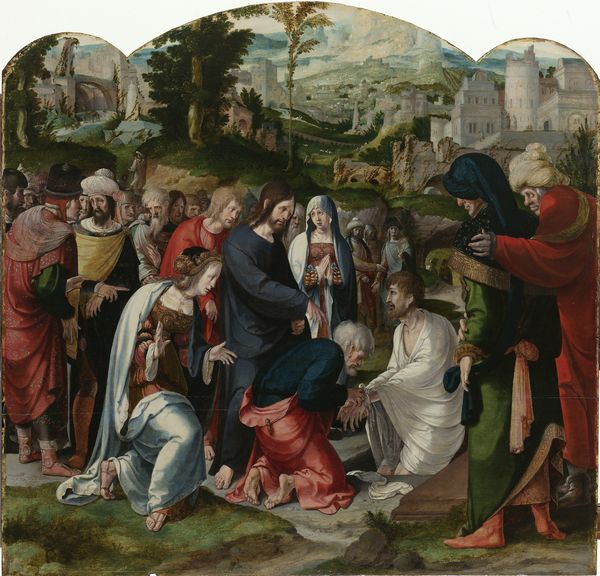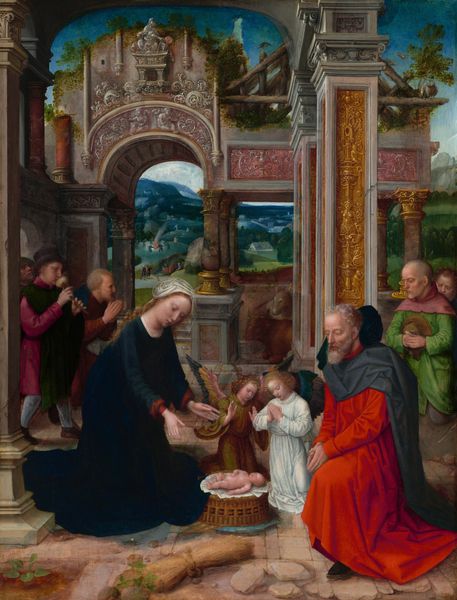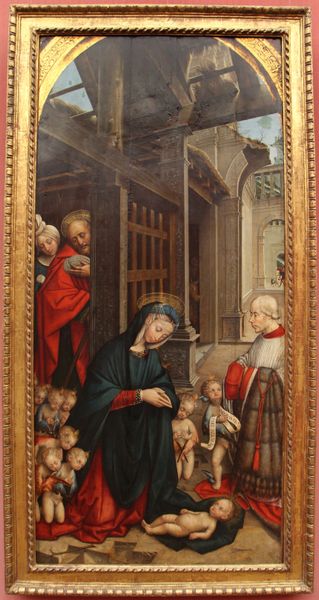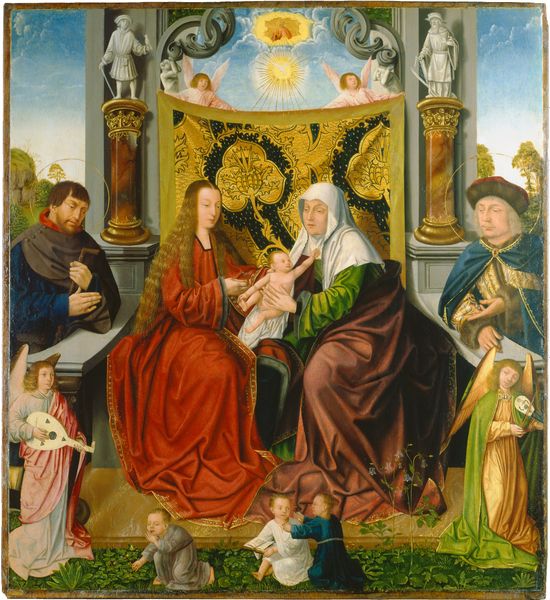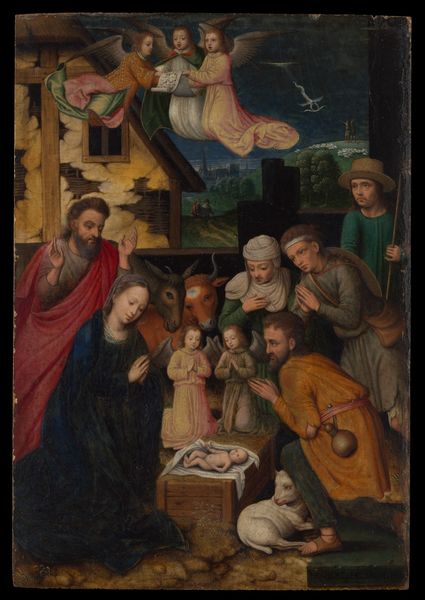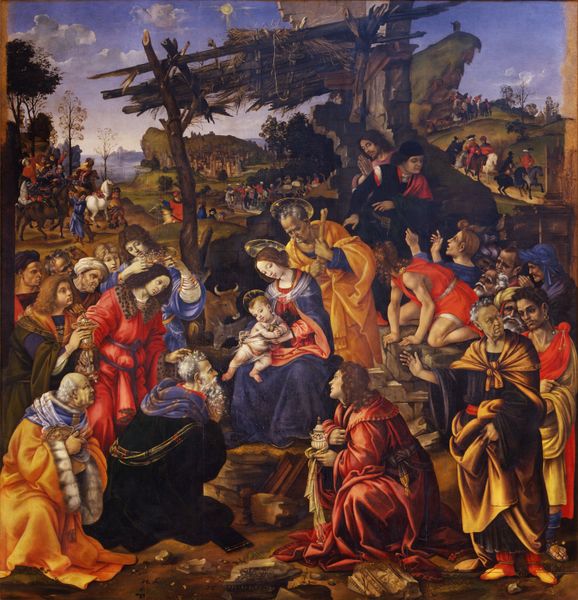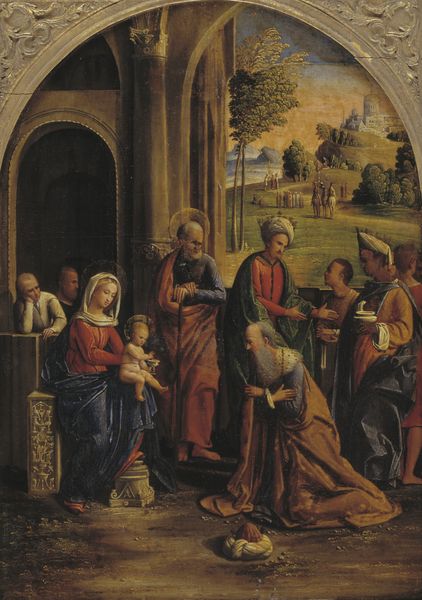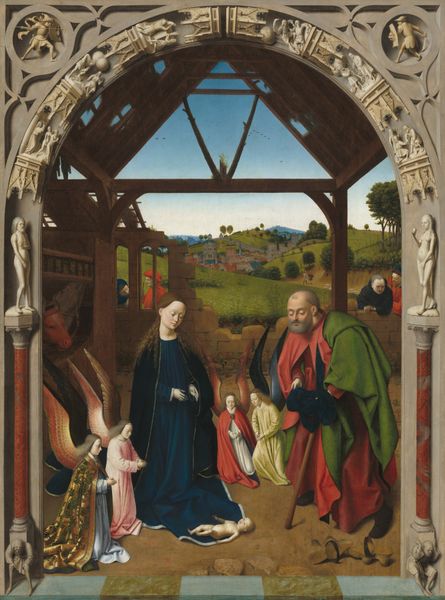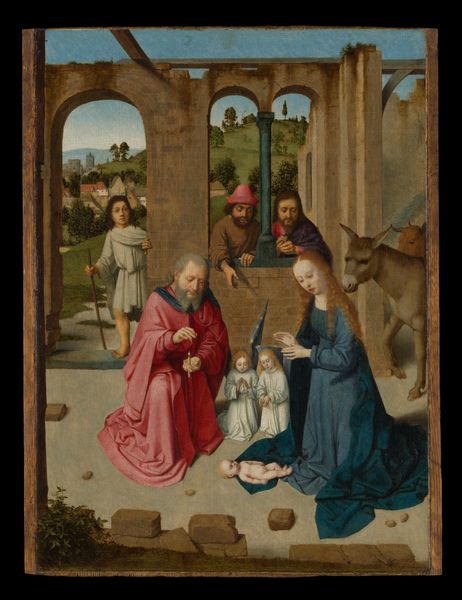
painting, oil-paint
#
portrait
#
painting
#
oil-paint
#
painted
#
figuration
#
oil painting
#
underpainting
#
history-painting
#
northern-renaissance
#
mixed media
Dimensions: 98.5 × 76.3 cm (38 3/4 × 30 1/16 in.) Painted surface: 97 × 74.9 cm (38 3/16 × 29 1/2 in.)
Copyright: Public Domain
Curator: What strikes me first about Jacob Cornelisz van Oostsanen's “The Adoration of the Christ Child,” painted around 1515, is the absolute abundance—an overwhelming generosity of angels and figures crammed into a single space. Editor: I agree! It’s intensely busy. The artist has filled the space with layers of production—both of human activity and also...divine spectacle. But is that space entirely coherent? The perspective feels somewhat...off. Curator: It does, doesn’t it? The architectural setting feels almost theatrical, like a stage set hastily erected. It gives it an otherworldly quality, enhancing the miraculous nature of the event. Consider, also, the underpainting. Notice its subtle impact on the whole. Editor: Ah, you’re right. It's particularly noticeable in Mary's cloak and in the shadows under the manger. So, we see layering, the underpainting allowing a luminosity and also a depth. There’s an acknowledgement of craft here; a celebration of technique. I mean, what kind of workshop facilitated such a dense painting, what was the apprenticeship system like at that time? Curator: The figures, with their almost doll-like faces, don't strive for realism. Instead, Cornelisz van Oostsanen invites us to participate in a symbolic vision, to experience the profound mystery of the Incarnation through a stylized, yet emotionally resonant, depiction. I keep returning to that distant landscape seen through the opening—pastoral and busy with labor. Editor: It certainly draws the eye! The relationship between the landscape and the interior scene… is it meant to show us the world outside needing salvation? Also, think of the patrons who commissioned this. Were they particularly devout? Wealthy merchants? Understanding their social status gives further nuance. Curator: Perhaps. Regardless, the composition as a whole invites reflection. It asks us to contemplate not only the scene of adoration but the divine implications within the world. Editor: Exactly! It pulls you into considerations about the material conditions of making art at the time as much as a reflection of divinity! Thanks!
Comments
No comments
Be the first to comment and join the conversation on the ultimate creative platform.

